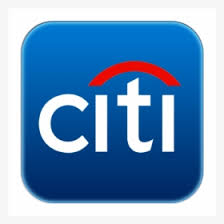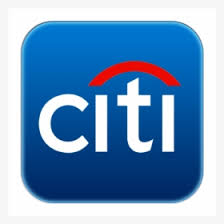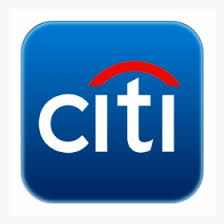Clara's best Balance Transfer Credit Cards.
What is a balance transfer credit card?
Make sure when you make the transfer you can keep up with the payments required, even 0% interest cards will require you make repayments. If you don't make these payments you can lose the promotional introductory APR.
What to look for in a Balance Transfer Card:
Make sure the company you're moving your credit-card debt to waives balance-transfer fees (3-5%.) Many banks do this to entice the new business, and even times will offer 18 months interest free. These promotions are constantly changing.
The grace period is the time between the end of the credit-card billing cycle and the due date of the bill. During that period (by law, at least 21 days but more often its 25 days) a cardholder doesn't have to pay interest on new purchases. But the grace period only applies if you are carrying no balance on the card. What many consumers don’t realize is that carrying a balance from a promotional balance transfer can affect the grace period if minimum payments aren't made.
What are the Possible Pitfalls of Credit Card Balance Transfer?
After you've accepted your 0% interest balance-transfer offer, you need to find out if the 0% is automatic or depends on a credit check. You should transfer the highest interest cards first (you also can transfer a card's balance that's under someone else's name.)
1. Your new card-issuer gives you a checkbook you can use a check to pay off the card you're moving off of or,
2. Over the phone you can ask the new card issuer to transfer money to the account you're paying off. You just provide the name, payment address and account number over the phone and the amount and your new credit card company will do the rest.
How do Transfers to Existing Cards work?
Imagine you owe $2,000 on a card with a 25% APR before you transfer a balance of $1,000 from a second card. The balance transfer rate offered is 0% for six months. The cardholder pays off $1,000 in six months, but because the 15% portion of the credit card debt is paid first, the 15% APR rate for six months applies to the $2,000 that was untouched by payments. Meanwhile, the card the $1,000 was transferred from has an APR rate of 12%, representing a loss of 3%.
You also have to think about what adding a big sum to a card will do to your credit utilization ration, which is the percentage of credit available that has been used, this is a key part of your credit score. The way it works is, lets say you have a card with a $10,000 balance, if you have a balance of $2000 you're using 20%. If you transfer $5000 it will then be 70%, typically anything over 30% utilization is bad for your credit so be very careful here.
It can both hurt or help your credit score (after the initial hard credit check that lowers your credit score briefly) If the new card stays below 30% credit utilization (which is basically the percentage of the limit you are using, for a $10,000 balance card $3000 is 30%.)
Once you've done your transfer consider keeping your old account open, closing an account can negatively affect your credit score, just aim not to use the card too much. The age of the account (ie open for longer) can also help improve your credit score.
So in short Does balance transfer affect credit score?
Only if you use over 30% of the credit-cards limit.
How long does a balance transfer take?
- American Express: 5-7 days for a balance transfer with American Express, but it can take upto 6 weeks.
- Bank of America: It can take up to two weeks with BoA to do a balance transfer.
- Capital One: A balance transfer with Capital One can take from 3-14 days based on if the process is done via mail
- Chase: It can take about a week to a balance transfer with Chase but can possibly take 21 days.
- Citibank: Takes 14 days to process a balance transfer, but the good thing is through that 14 days you opt to cancel or change the terms of the transfer.
- Discover: A Discover account must be opened for 14 days before a balance transfer is processed. It will take 4 days after this typically.
Capital One balance transfer
Capital One Balance Transfer VentureOne Rewards Credit Card offers a 0-3% transfer balance fee based on the APR. They also offer 0% APR for 12 months and then 15.49% to 25.49% after that. You'll earn 1.25 mules on all purchases and a 20,000-mile bonus if you spend $500 on your card in the first three months.
Capital One Balance Transfer Quicksilver Cash Rewards Credit Card offers a 0% transfer balance fee based on the APR. They also offer 0% APR for 15 months and then 15.49% to 25.49% when 15 months has elapsed. You'll earn 1.5% cash back on all purchases and a $200 cash bonus if you spend $500 on your card in the first three months.
How to pay down credit card debt with Tally
They help you pay down credit card debt faster and have amazing success rates. Their main product helps you manage all credit cards in one app and pay down the right cards at the right time. They also swap your card debt to lower APR cards.
Here's what they say about themselves:
"Tally monitors the balances, APRs, and due dates on each card you register. Tally’s smart technology will determine which cards to pay first, based on factors such as APRs and utilization. If you have cards with a lower APR than your Tally credit line, only minimum payments will be made to those cards to make sure you won’t be charged late fees. You can disable Tally’s Late Fee Protection at any time."
View moreView less
The Citi Rewards+ Card is suited for people who would like to earn rewards on small purchases in addition to consolidating credit card debt and benefiting from a 0% APR on purchases and balance transfers for 15 months. This is the only balance transfer card that rounds up to the nearest 10 points on every purchase and 2x points at gas stations and supermarkets. Card holders can receive 15k bonus points after spending $1,000 within the first three months of account opening.
Visit websiteView moreView less
Citi's Double Cash Card offers consumers with good to excellent credit the opportunity to save on interest with a balance transfer and earn 2% cash back on each purchase. The card features a 0% intro APR on balance transfers for 18 months, and after that a variable APR between 13.99% and 23.99%. There is a balance transfer fee of 3%
Visit websiteView moreView less
The Citi Diamond Preferred Card is best for people with good to excellent credit looking to consolidate high-interest credit card debt and pay off their balance over 18 months with a 0% APR on purchases and balance transfers. After that the regular APR ranges from 14.74% to 24.74% with no annual fee. There is a standard balance transfer fee of 3%.
Visit website



